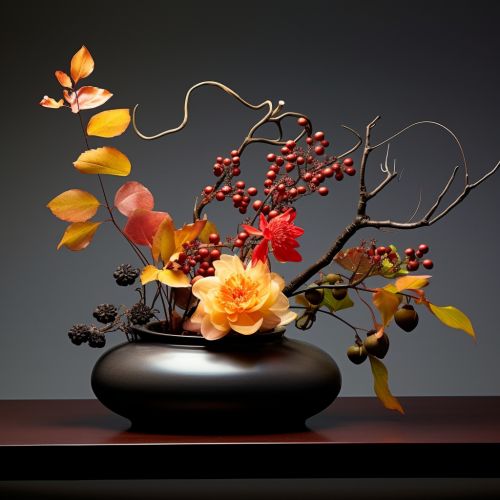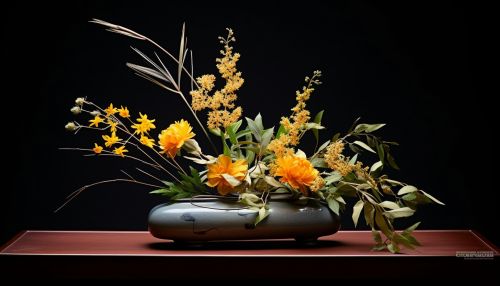Ikebana
History
Ikebana, also known as Kado, is a traditional Japanese art form that involves arranging flowers, branches, and other natural elements in a harmonious and balanced manner. The practice of Ikebana dates back to the 6th century when Buddhist monks began arranging flowers as offerings at temples. Over time, the practice evolved into a sophisticated art form with various schools and styles, each with its own unique set of principles and techniques.


Principles and Aesthetics
The principles and aesthetics of Ikebana are rooted in the Japanese philosophy of Wabi-sabi, which values simplicity, asymmetry, and the beauty of imperfection. Unlike Western floral arrangements, which often emphasize color and abundance, Ikebana focuses on line, form, and space. Each arrangement is carefully composed to create a sense of harmony and balance between the natural elements and the container.
Styles and Schools
There are over 1,000 schools of Ikebana, each with its own unique style and philosophy. The three most prominent schools are Ikenobo, Ohara, and Sogetsu. The Ikenobo school, the oldest and most traditional, emphasizes formal and structured arrangements. The Ohara school introduced the concept of "landscape arrangement," which seeks to capture the beauty of natural landscapes in miniature form. The Sogetsu school, on the other hand, encourages individual creativity and experimentation, allowing practitioners to incorporate unconventional materials and techniques into their arrangements.
Techniques
Ikebana involves a variety of techniques, including cutting, bending, and securing stems and branches in a specific manner. The arrangement is typically anchored in a shallow container using a kenzan, a heavy metal plate with sharp spikes. The flowers and branches are then arranged according to the principles of the specific school or style.
Cultural Significance
Ikebana is more than just a decorative art form; it is a spiritual practice that embodies the Japanese concepts of mindfulness and respect for nature. Practitioners of Ikebana often describe the process as a form of meditation, allowing them to connect with nature and cultivate a sense of inner peace.
Modern Ikebana
In recent years, Ikebana has gained international recognition and popularity. Contemporary Ikebana artists continue to push the boundaries of the art form, incorporating modern design principles and unconventional materials into their arrangements. Despite these modern influences, the core principles of Ikebana—simplicity, balance, and respect for nature—remain unchanged.
